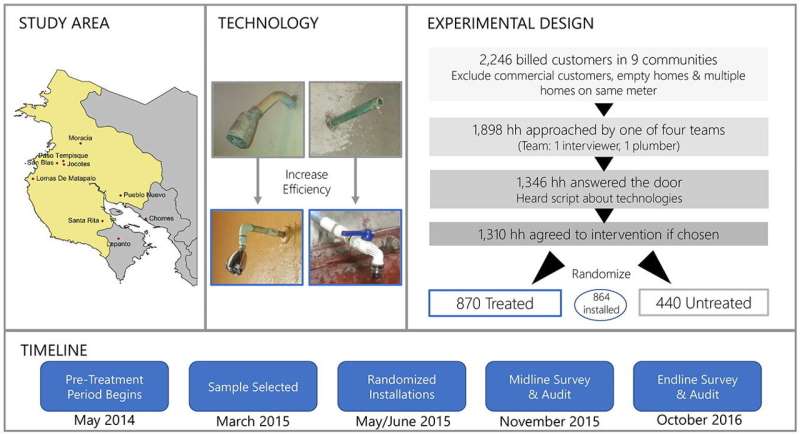This article has been reviewed according to Science X's editorial process and policies. Editors have highlighted the following attributes while ensuring the content's credibility:
fact-checked
trusted source
proofread
No win-win? Input-efficient technologies might not be so efficient after all

To address natural resource scarcity, pollution, and other harmful effects of climate change, some scientists and policymakers emphasize the adoption of input-efficient technologies like water-saving devices and fuel-saving stoves. Proponents often refer to these input-efficient technologies as a "win-win" for the benefits to their users and to the environment and lament their low adoption rates by consumers in what they call an "efficiency paradox."
A paper published in the Journal of the Association of Environmental and Resource Economists examines this paradox and finds that the benefits to consumers from input-efficiency adoption are, on average, negative.
In "Input Efficiency as a Solution to Externalities and Resource Scarcity: A Randomized Controlled Trial," authors Francisco Alpizar, Maria Bernedo Del Carpio, and Paul J. Ferraro conclude that, with respect to the input-efficient technologies that they study, no efficiency paradox exists.
Much of the data regarding the efficiency paradox has been taken from the energy-efficient context. In "Input Efficiency," the authors report instead on a randomized controlled trial (RCT) of water-efficient technology adoption. The trial took place in Costa Rica, where the overexploitation of public aquifers is a pressing concern.
Nearly 900 households, from a group of over 1,300 households, were selected at random to receive water-efficient showerheads and faucet aerators. Engineering methods predicted an average reduction in water use of about 30%, whereas the actual reduction in the trial was only about 9%.
According to the authors, that gap between prediction and reality stemmed from a set of faulty engineering and behavioral assumptions. For example, engineers assume households do not change their behaviors after the technology is adopted, whereas survey data suggested that households often leave the water running longer to compensate for the lower flow rate of the efficient devices.
When the authors assess how the participating households value the water savings, which are both uncertain and realized over many years, and compare this value to the upfront cost of purchasing the technologies, they conclude that, for the average user, the net benefits of these input-efficient technologies are negative.
The absence of a water efficiency paradox—in other words, the absence of a win-win outcome for the environment and the people—means that simply doing a better job of informing consumers about the advantages of input-efficient devices will not be an effective strategy for mitigating resource scarcity or adapting to climate change. As noted by the authors of "Input Efficiency," their results suggest that "consumer misinformation may not be the main driver of low adoption rates" of efficient technologies.
Instead, the main driver is simply the modest savings from the technologies combined with the uncertainty and delayed nature of those savings. "In summary," they note, "claims of a 'win-win' outcome associated with the adoption of input-efficient technologies in our study context are not supported by the data." To address water scarcity and mitigate the effects of a changing climate in their study area, other solutions will be necessary.
More information: Francisco Alpizar et al, Input Efficiency as a Solution to Externalities and Resource Scarcity: A Randomized Controlled Trial, Journal of the Association of Environmental and Resource Economists (2023). DOI: 10.1086/725700


















